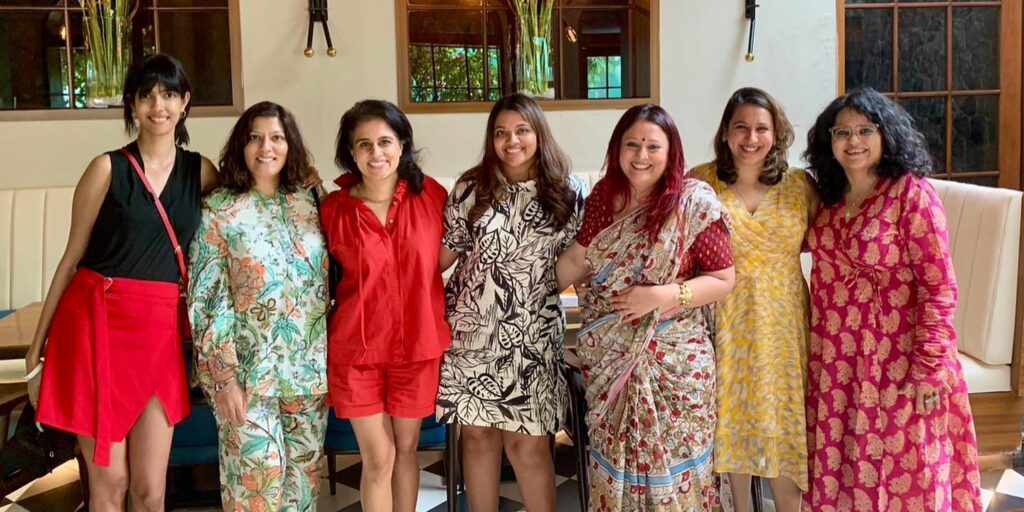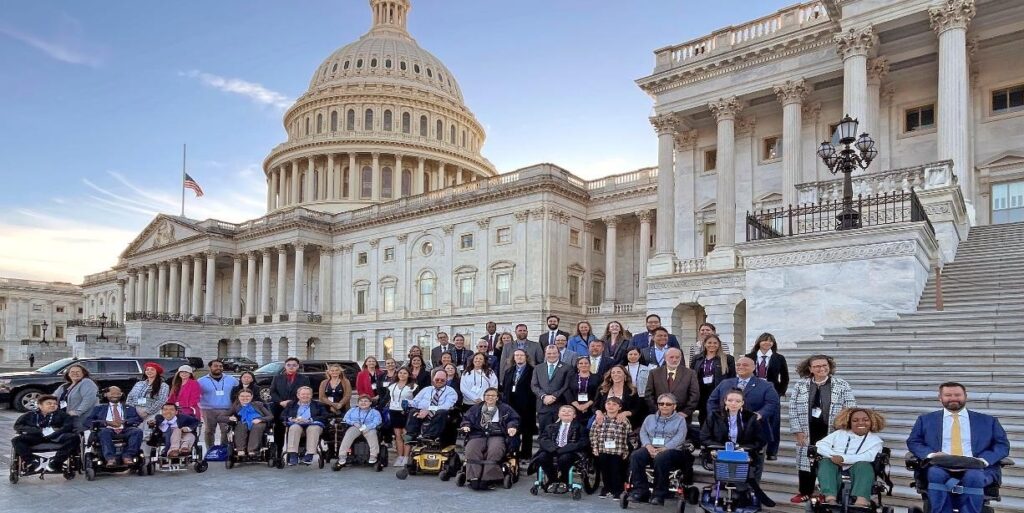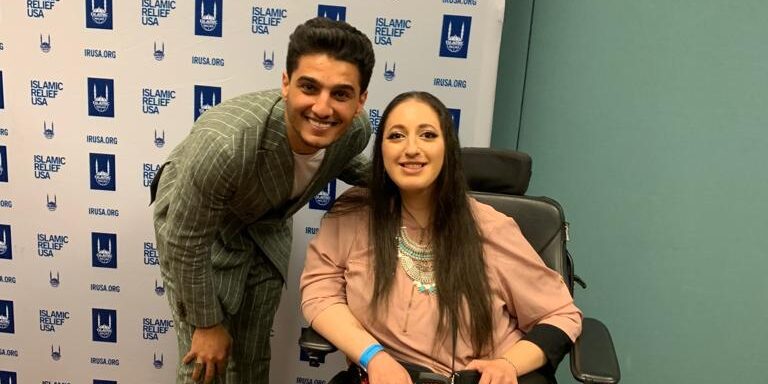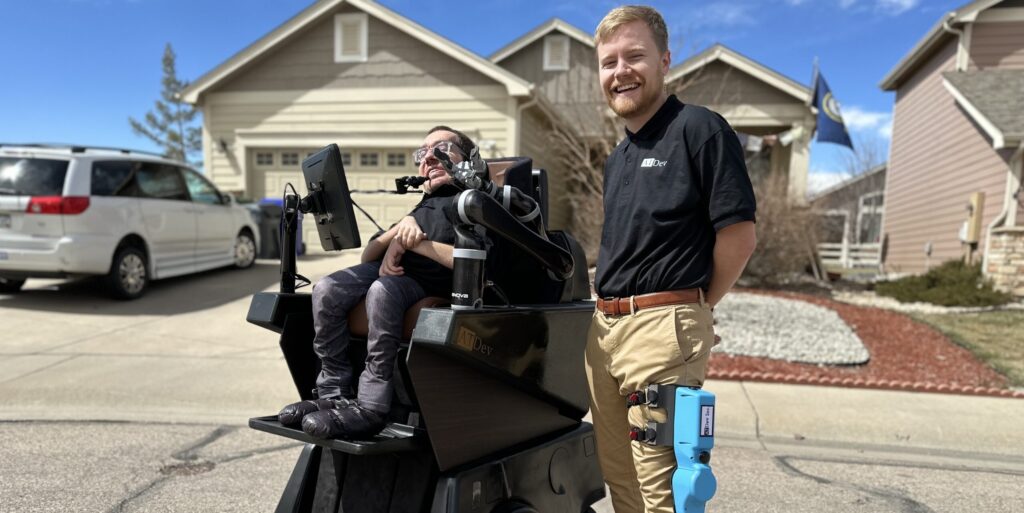
MDA Ambassador Guest Blog: Entrepreneurship, Advocacy, and Innovation: Building a More Accessible Future from the Inside Out
By Owen Kent | Thursday, October 2, 2025
5 Second Summary
MDA Ambassadors play an essential role in furthering MDA’s mission while representing and empowering the neuromuscular disease community. Quest Ambassador Guest Blog series provides a platform to share their personal stories, perspectives, and experience.
Owen Kent is the co-founder and Chief Marketing Officer of Assistive Technology Development (ATDev), a startup creating innovative mobility devices that empower people to live independently and confidently. As a lifelong wheelchair user with spinal muscular atrophy (SMA) Type II, Owen draws on his lived experience to design user-driven technologies, advocate for disability rights, and amplify diverse voices through film and media. He is passionate about breaking down barriers, building inclusive communities, and advancing the future of accessibility.
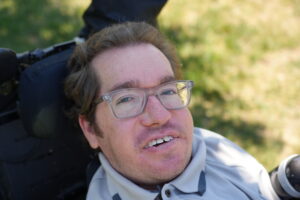
Owen Kent
When I first started my company, Assistive Technology Development (ATDev), my goal wasn’t just to create another piece of equipment. It was to solve a problem I knew firsthand. As a person with spinal muscular atrophy (SMA) Type II, and a lifelong wheelchair user, I’ve experienced both the frustrations of inaccessible products and the life-changing impact of thoughtful design. Those experiences became my blueprint for building solutions that aren’t just functional, but liberating.
Entrepreneurship can be challenging for anyone, but living with muscular dystrophy means I’ve been training for it my entire life. Problem-solving is second nature when your daily routine requires constant adaptation. The same resilience that gets me through a day of logistical hurdles also fuels my business. Every time I figure out a creative workaround in my personal life, I’m reminded that innovation is born from necessity.
Breaking stereotypes about disability and leadership
Society often has a narrow view of what people with physical disabilities can do. When I tell people I’m a filmmaker, drone pilot, engineer, and startup co-founder, the reaction is often surprise or even disbelief. That is exactly why it is so important to share these stories. Disability is not a limitation on ambition or creativity. If anything, the challenges we face can expand our vision of what is possible.
The stereotype-breaking goes beyond my own story. I have met so many people in the neuromuscular disease community who are redefining what leadership looks like, including scientists, entrepreneurs, artists, and athletes. All are proving that innovation thrives when we dismantle assumptions.
Innovation from the inside out
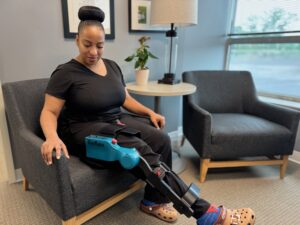
Individual using Reflex, a smart knee brace
At ATDev, our flagship product, Reflex, is a smart knee brace that combines lightweight exoskeleton technology with integrated telehealth features to help people recover from knee surgery at home. The device guides the leg through safe ranges of motion, provides resistance for strengthening, and records daily progress automatically. Patients wear Reflex just like a brace, and with the press of a button can complete stretching and strengthening sessions without needing to travel to a clinic. The idea came directly from my lived experience, drawing on the barriers I faced in accessing consistent, high-quality physical therapy. While Reflex was not specifically designed for people with neuromuscular conditions, this technology will ultimately benefit them by making rehabilitation more accessible, more measurable, and more flexible.
What sets Reflex apart is not only its engineering but its ability to connect patients and clinicians seamlessly. The brace collects objective data on range of motion, strength, and usage, then shares that information securely through a telehealth platform. Therapists can log in, review progress, and adjust treatment plans in real time, making remote care both practical and effective. The product was shaped by people who will actually use it, so every feature, from the adjustable fit to the software interface, was influenced by real-world feedback. Across industries, products designed with direct input from users with disabilities consistently outperform those created without it. When you build from the inside out, you do not just meet minimum requirements. You create solutions that are intuitive, efficient, and empowering.
Accessibility benefits everyone
One of the biggest myths about accessibility is that it only helps a small group of people. History proves otherwise. Curb cuts, which were first introduced to help wheelchair users, also benefit parents pushing strollers, travelers with rolling luggage, and workers moving heavy equipment. Voice assistants like Siri and Alexa, initially developed with accessibility in mind, are now mainstream tools.
When we invest in accessible design, we are not solving a special interest problem. We are creating a better experience for everyone. That is why I see accessibility not as a compliance checkbox, but as a driver of innovation. The most forward-thinking companies understand that inclusive design is not charity. It is good business.
From personal experience to policy change
While building products is one way to make an impact, influencing policy is another. In Colorado, I have been involved in advocacy efforts to make our state more inclusive, from improving transportation access to strengthening disability rights legislation. These changes often start small, such as a conversation in a committee meeting or a personal story shared with a lawmaker, but they can have lasting ripple effects.
Representation matters in these spaces. When people with muscular dystrophy and other disabilities are part of the decision-making process, policies are more likely to address the realities we live every day. Entrepreneurs have a unique role to play here. We understand both the systemic barriers and the practical steps to overcome them, which makes our voices valuable in shaping the future.
Building the future together

Owen Kent at the Berkley Skydeck
If there is one lesson my journey has taught me, it is that accessibility, entrepreneurship, and advocacy are deeply interconnected. The same drive that pushes me to design better technology also pushes me to speak up in policy discussions and challenge outdated stereotypes.
Creating a more accessible future is not the work of a single person or company. It is a collaborative effort between innovators, advocates, policymakers, and everyday people who believe that independence and dignity should be universal.
For me, the path forward is clear. Keep building from the inside out, keep breaking barriers, and keep proving that when accessibility leads, everyone wins.
Next Steps and Useful Resources
- Learn more about Spinal Muscular Atrophy (SMA) here.
- Learn more about assistive technology here.
- Read about other MDA Ambassadors’ experience with assistive technology here and here.
- For more tips, read Easy, Expert-Level Life Hacks from an Occupational Therapist.
- Learn about tools and resources in MDA’s on-demand workshop Access to Coverage: Equipment and Assistive Devices.
- Read Tips and Tricks to Avoid Frustration with Getting and Repairing Medical Equipment.
- Browse MDA’s Mental Health Hub.
- MDA’s Resource Center provides support, guidance, and resources for patients and families. Contact the MDA Resource Center at 1-833-ASK-MDA1 or ResourceCenter@mdausa.org
- Stay up-to-date on Quest content! Subscribe to Quest Magazine and Newsletter.
TAGS: Accessibility, Ambassador Guest Blog, Ambassadors, Equipment and Assistive Devices
TYPE: Blog Post
Disclaimer: No content on this site should ever be used as a substitute for direct medical advice from your doctor or other qualified clinician.


